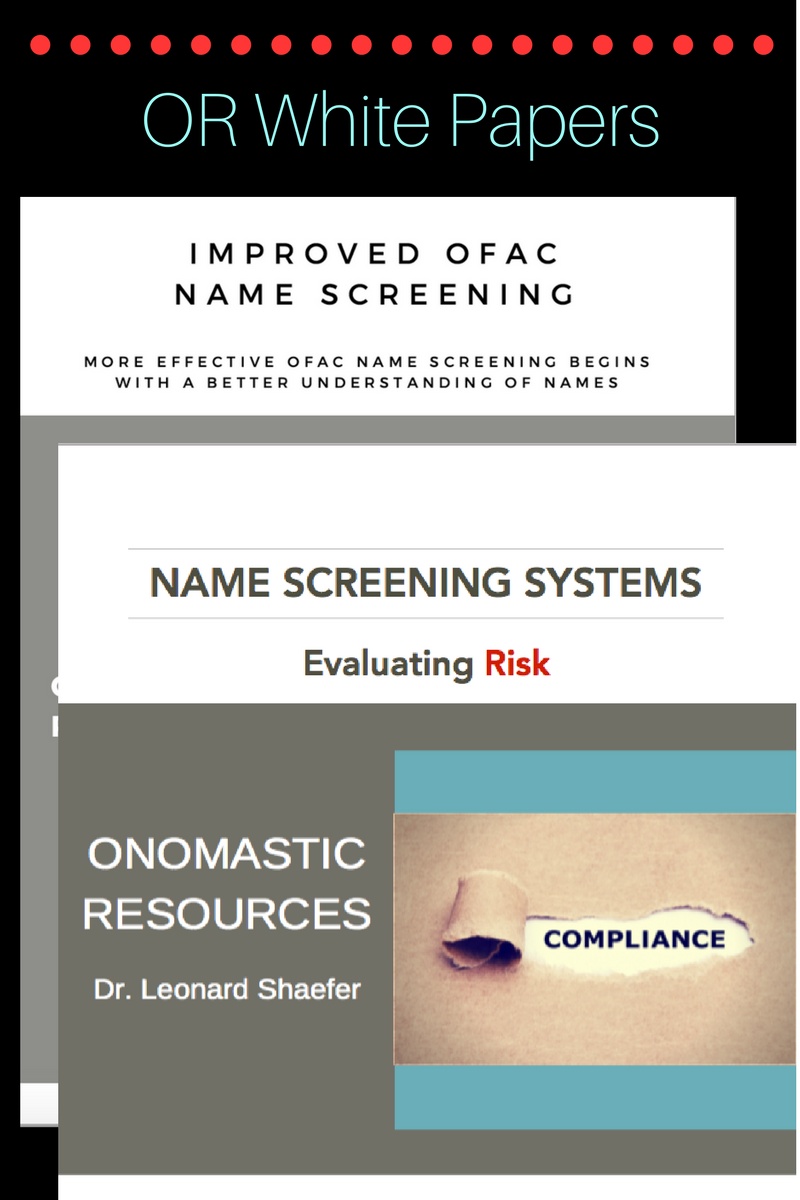According to the 2010 U.S. Census, there are some 1.7 million U.S. residents who identify themselves as being principally of Korean descent . Many large cities across the U.S. have sizeable Korean communities, and these communities generate a significant amount of commercial activity. For these reasons and more, it is reasonable to expect that Korean names will appear frequently and sometimes prominently in the customer lists, transaction detail and other large-scale data-stores of many organizations.
To the extent that native English speakers have any grasp of Korean personal names, they may know that a large number of Korean-Americans share a very small number of surnames (family names), a faithful reflection of the surname distribution patterns in (South) Korea, where just 3 surnames (KIM, LEE and PARK) account for nearly half the recorded population . A few more Anglophones may also know that what we call the “first name” (AKA given-name) is really the “last name” in the Korean name-model. That is, Koreans say and write the surname first, followed by the given-name, which is thus found in the “last name” position. So, from the perspective of the Anglo name-model, a Korean name is “backwards.”
When a “backwards” Korean name is collected as-is and stored in a data record within an organization’s IT system, there are important, usually negative consequences for subsequent retrievals and match-merge activities. Fortunately, this risk is often mitigated by several factors. First, Korean-Americans are generally quite aware of the name-syntax issue that they face in an Anglophone society, and they understand that it is in their best interest to be sure that their name is recorded “correctly” (i.e., according to the Anglo name-model, and not in the Korean model), so they frequently adapt their “backwards” name to the Anglophone order. Next, the predominance of just a very few surnames among Korean-Americans greatly simplifies the effort required to locate, curate and correct “backwards” Korean names in existing data records, even if this effort is entirely manual in nature. Third, the name-reversal becomes largely moot if the same error occurs each time the same name is encountered.
When considering how best to handle Korean/Korean-American names in an IT system where the Anglo name-model predominates, several additional factors can come into play:
- Generational patterns: there is a strengthening trend within many Korean-American communities to give Western-style or “Biblical” given-names to their children. Thus, many younger Korean-Americans have a Korean surname and an Anglo-style given-name.
- “Double-reverse” names: a related trend among many younger Korean-Americans is to leverage the fact that their Korean surname happens to coincide with a common Anglo given-name. In this mode, a woman whose actual Korean name is KIM JONG will use her Korean surname as her Anglo given-name, and a man whose Korean-model name is LEE SEOK will go by LEE as his given-name. These patterns of usage may or may not be reflected in associated primary identification documents, such as the driver’s license or travel documents. Reciprocally, certain popular Korean given-names (MOON, YOUNG, JUNG) happen to coincide with reasonably common Anglo or European surnames.
- A careful review of community directories in several U.S> cities shows that some Korean-Americans who have exactly the same surname (as shown in the native writing system, Hangul) will have very different spellings of that name in the roman (A-Z) alphabet format. This phenomenon goes some way towards offsetting the large number of people with the same Korean surname, but it can also obscure the fact that two names that are apparently very dissimilar in spelling can still represent the exact same surname. Each of the most commonly encountered Korean surnames is associated with multiple Romanized spellings. To make things even more complicated, these same directory listings also reveal in some instances that members of the same family, residing at the same address in the same household, have selected differing Romanized forms of the same Korean surname that they all share. For that reason, it is important to know, if possible, the exact provenance of the Romanized form associated with each Korean-American name, as different Romanization patterns predominate in differing settings. In addition to several “official” Romanization styles (Revised, McCune-Reischauer), there are numerous “popular” spellings which have arisen, a trend which is likely to strengthen over time.
[For a more complete discussion of the issues with Hispanic, Islamic, Korean, and Russian names, download our white paper on Improved OFAC Name Screening.]



